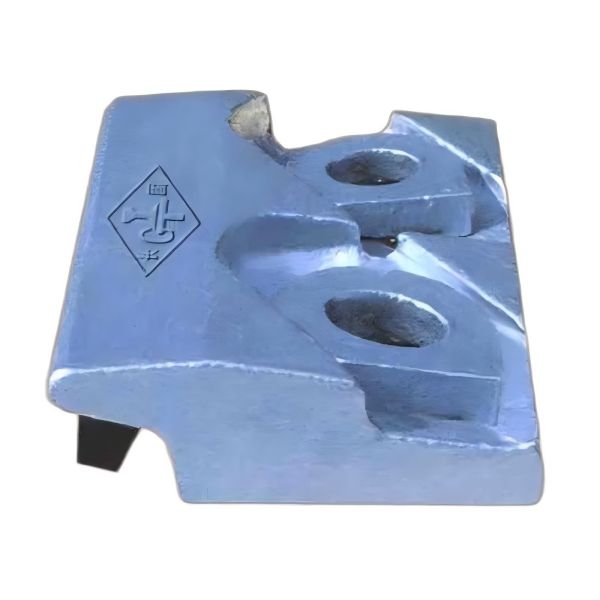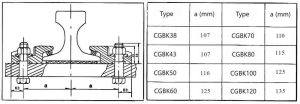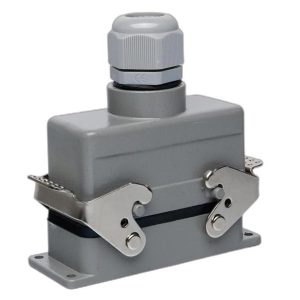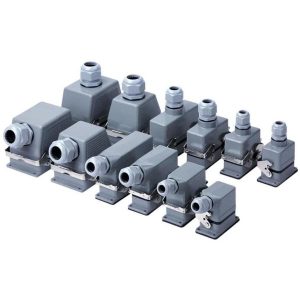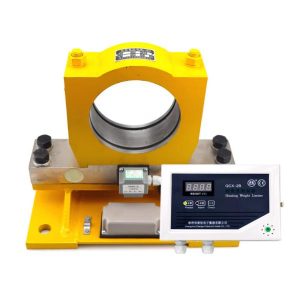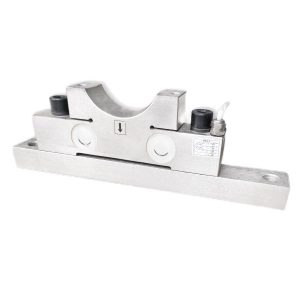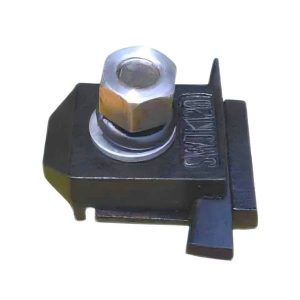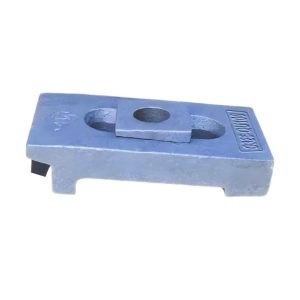CGBK Κλιπ ράγας
Specifications of CGBK Rail Clips
- Models: CGBK38, CGBK43, CGBK50, CGBK60, CGBK70, CGBK80, CGBK100, CGBK120
- Fixing Method: Bolt fixing
Features of CGBK Rail Clips
- Ευκολία εγκατάστασης και συντήρησης
CGBK Rail Clips are designed to facilitate rail installation, adjustment, and replacement, ensuring efficiency in operations. - Noise Reduction and Vibration Dampening
Thanks to the rubber tongue and composite rubber pad, the clips provide cushioning and effectively reduce noise. - Bolt Torque Specifications
The M22 bolts used in the system are tightened with a torque of 170 N·m. - Maximum Lateral Force
The clips can withstand a maximum lateral force of 80 kN, ensuring stability under heavy loads.
Key Considerations for Selecting CGBK Rail Clips
- Compatibility with Crane Wheels and Rails
- The crane’s horizontal wheels must match the specifications of the chosen rail type.
- Clearance Between Crane Wheels and Rail Clips
- Ensure a clearance of less than 10 mm between the crane’s horizontal wheels and the rail clips.
- If this condition is not met, reverse bolt installation can be used to minimize space occupied by the rail clips.
- Reinforcement for Heavy-Duty Cranes
- For cranes operating under extra-heavy-duty conditions, replace the composite rubber pad under the rail with a 6 mm thick steel plate (material: Q235).
- Model Selection Based on Rail Type
- Choose the appropriate CGBK clip model according to the rail type. For instance, for rail type QU100, use the CGBK100 model.
Installation Steps for CGBK Rail Clips
- Preparation of Crane Beams
- Drill holes in the crane beams according to the specified AA value and maintain a 500 mm spacing between clip groups.
- Laying the Rubber Pad
- Lay the composite rubber pad continuously along the length of the rail.
- Positioning the Clips
- Place the front section of the CGBK Rail Clip against the rail and insert the bolts.
- Tightening the Bolts
- Tighten the bolts securely, ensuring the rubber tongue presses tightly against the rail.


